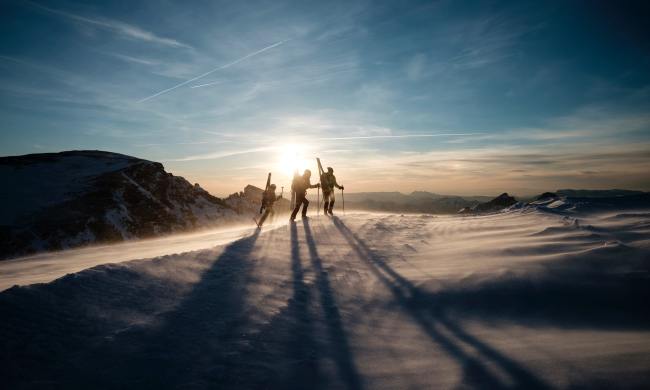The best time to learn a new skill, hobby, or death-defying past-time is almost always as a child — long before we develop a healthy respect for our own mortality. Many of us, however, only learn these things later in life. The problem is, as adults, we can become gripped by fear that keeps us from becoming the sea kayaker, scuba diver, or solo free climber we always wanted to be. Next year, one unique camp promises to help grown men (and women) squash that fear like a pro.

Unlike traditional ski schools, The Art of Fear Ski Camp assumes attendees already know the fundamentals of skiing. Instead, the one-of-a-kind camp is designed to address the one thing that plagues many intermediate skiers: fear. For two days, camp-goers will learn how performance anxiety can mess with their downhill game and understand why fear can be the one thing that holds us all back.
Accidents and injury are a common source of apprehension, so the camp will address the anxiety we naturally develop with age when we realize we’re not, in fact, invincible. Many people can be fearless in one aspect of their lives but paralyzed by fear in another. The camp will guide students on how to channel that fearlessness into all aspects of life — skiing, in particular.
This isn’t the typical self-help camp that purports to disappear your fear through vague, woo-woo rituals like self-actualization or rationalizing it away with “the power of positive thinking.” It promises a legit, deep dive into the root causes of your personal fear and how it can recirculate as anxiety, ultimately preventing you from doing the things you want to do. It’s led by world-class athlete Kristen Ulmer who was named “best female big mountain extreme skier in the world” for 12 straight years. Over the last decade, in particular, she’s made a name for herself with death-defying cliff jumps and “you fall, you die” downhill descents. She’s also a master of most every other adrenaline-fueled sport you can name, from ice climbing to paragliding to adventure mountain biking to flying trapeze. Suffice to say she knows a thing or two about being afraid.
The two-day Art of Fear Ski Camp takes place March 9-10, 2019 at Utah’s Alta Ski Area. It’s open to just 20 intermediate and pro-level skiers over 12 years of age. Pricing is $579 per person for the camp only; lift tickets and other amenities are not included. While it may sound pricey, Ulmer promises the results will be permanent and is backing the camp with a 100-percent guarantee if it doesn’t work for you.



